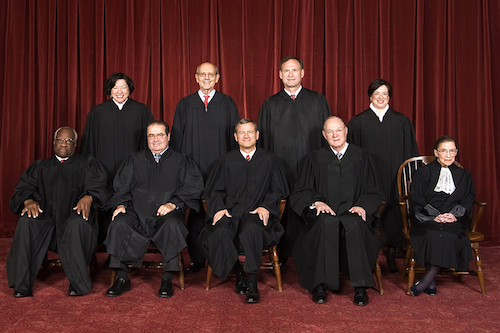The Supreme Court on June 29 struck down a proposed Environmental Protection Agency rule that would have potentially shuttered more coal fired power plants, undermining the viability of the electrical grid while playing havoc with thousands of good-paying jobs.
 |
| The Supreme Court ruled that the Environmental Protection Agency’s 2011 rule on mercury emissions failed to factor in billions in costs to coal plants.
|
The case examined the EPA’s regulation of mercury emissions from power plants under the Clean Air Act. In a 5-4 decision, the majority ruled that the agency misinterpreted the act by failing to consider the costs related to implementing the rule.
IBEW Utility Department Director Jim Hunter said that while most of the 600 coal plants affected by the EPA’s rule – which was passed in 2011 – have already been decommissioned, the court’s decision offers at least a temporary reprieve for about 150 of the newer plants that are crucial to providing the baseload power supply for the nation’s energy mix.
These facilities – about 25 percent of those targeted by the EPA – were granted year-long extensions in 2014, due to their necessity to preserve the smooth operation of the energy grid.
“The good thing is that the plants that got the extension are still operating, but they’re in limbo,” Hunter said. “Will they have to close next April or not? It’s still undecided.”
Industry groups joined nearly half the states in suing the EPA after the 2011 ruling. At issue was the federal agency’s calculations of projected health care savings generated by eliminating trace amounts of mercury from coal fired plants. What the EPA failed to do – and what the court ruled against them for – was to take into account the billions of dollars it would cost the industry to implement the rule, by adding scrubbers and investing in the operations and maintenance of new equipment.
“The EPA was looking for between $5 and 6 million in savings – but it was going to cost the industry more than $9 billion a year to get it,” Hunter said.
Hunter and other IBEW leaders have spent time with lawmakers on Capitol Hill highlighting the importance of the union’s expertise in assessing the nation’s power supply. Last April, Hunter testified at a congressional panel urging senators to ensure the reliability of the grid. He recapped the union’s 2011 warning to the Environmental Protection Agency predicting that prematurely removing 69,000 megawatts of coal-fired generation could cause blackouts during extreme weather emergencies. At the time, the EPA disputed the IBEW’s numbers. The agency now confirms the union’s predictions.
Hunter said the Supreme Court’s ruling underscores the need to have industry and the IBEW at the table when lawmakers discuss matters critical to the nation’s energy future.
“We are having the EPA trying to set energy policy for the country,” Hunter said. “But they’re not experts in energy policy – or in reliability, cost, markets and all these other components of the electrical industry. But they’re saying through these various rules what they think the electrical industry should look like.”
Sen. Joe Manchin (D-W.Va.) said the court’s ruling was a positive move for the nation’s energy and economic needs.
“Today's Supreme Court ruling sends a strong signal to the EPA that it must stop ignoring the economic damage its regulations are causing to our energy sector and our economy,” he said. “All West Virginians and Americans want to drink clean water and breathe clean air. All we are asking for is a partner and not an adversary in the federal government to work with states like West Virginia that produce domestic resources to make this country less dependent on foreign energy and more secure as a nation.”